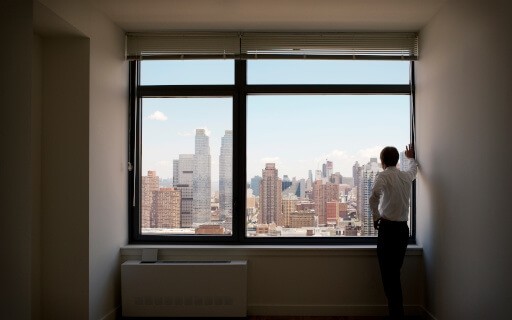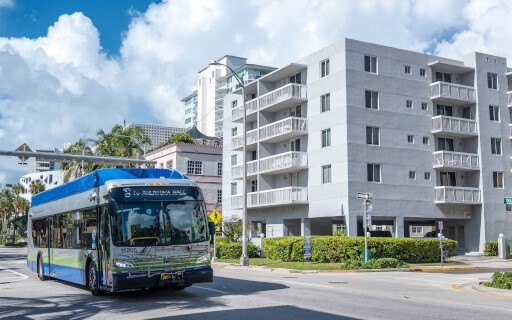Most people are familiar with the concept of a furnished property for purchase. Real estate companies stage homes all the time with the option to purchase the furniture so that potential buyers can see themselves in the space and make the move easier. But should you apply the same concept as a landlord and furnish your rental property?
What Is a Furnished Rental Property?
A furnished rental property includes all the furniture in the requisite rooms that would make a renter’s transition into the space easy and allow them to bring almost no extra furnishings.
What is a fully furnished rental?
A fully furnished rental means that in each respective room, the appropriate furniture will make the renter’s experience essentially turn-key. The living room will contain the appropriate seating, such as a couch or sofa, coffee table, floor and/or ceiling lighting, and maybe even art.
Bedrooms will come with a mattress, bed frame, a dresser, and maybe nightstands as well. The bed may come with linens on it, but that’s not always the case.
The kitchen should be turn-key too, complete with silverware, plates and bowls, glassware, pots and pans, and all that’s needed to cook a full course meal even for the renter’s in the property.
What is a semi-furnished rental?
A semi-furnished rental can refer to many different conditions of a property, ranging from a bare bones unit with just the necessary appliances, to something nearing a fully furnished property. A less extravagant semi-furnished rental means the unit will be outfitted with things like cabinets, ceiling fans, curtain rods, and all the standard fixtures you can expect in a habitable rental. Some semi-furnished rental properties may be closer to a fully furnished unit, meaning renters may be provided with a couch, dining room furniture, and a few other small pieces. Either way, a semi-furnished rental basically means the renter won’t move into a bare bones unit.
A semi-furnished will typically have a lower up-front cost than a fully furnished rental property, but you could lose out on some renters looking for a turn-key solution, especially short-term rentals.
Short-Term vs. Long-Term Furnished Rentals
It’s common to find fully furnished rentals in a short-term lease situation, meaning a rental agreement that can last from a few weeks to just a few months, but typically less than a year. A short-term rental is ideal for business travelers who may be in a different city for an extended period of time but less than a long-term lease allows.
Long-term rentals refer to lease terms ranging from one year up to two. It’s less common to find fully furnished rentals in this type of lease scenario since most renters who plan to reside in the same space for a year or more most likely want to make the space their own.
Pros and Cons of Renting Out a Furnished Rental
Pros of a furnished rental
- You can charge more rent to cover the cost of furnishing the unit
- You can fill your rental quicker and enjoy less downtime since tenants can move in quickly (Make sure to highlight this unique feature when you list your property on Apartments.com! A furnished rental is very appealing to business travelers or renters in-between housing!)
- You can deduct some of your furniture costs from taxes
Cons of a furnished rental
- More upfront costs could mean it will take longer to get your rental ready
- More furniture means more opportunity for damages that can be difficult to handle
- Replacing furniture due to wear and tear can get costly
Pros of an unfurnished rental
- It’s less expensive to get your rental ready to show
- You’ll have less things to worry about getting damaged
- Your tenants may stay longer since they can make the space their own
Cons of an unfurnished rental
- It may be difficult to attract short-term tenants without furnishings
- You can’t charge as much for rent
- Your rental may see more damage as different tenants move their furniture in
To Furnish or Not to Furnish: The Choice Is Yours
The ultimate deciding factor in determining if you want to furnish a rental property is: will it be more profitable in the long run? You’ll have to consider the upfront costs of furnishing the unit, replacement costs, storage costs, and the rate of tenant turnover to decide if it’s worth it for you and your business. If you’re looking for a short-term rental solution, then furnishing your rental may be the only way to get those types of tenants.
If you want to reduce tenant turnover and let your renters make a home for themselves, then it may not be in your best interest to furnish the rental. Whichever way you’re leaning, ask yourself these questions:
- Are you really making significantly more income from renting out a furnished rental than an unfurnished one?
- After all the expenses and upkeep, is it worth the extra hassle?
Each property situation and rental market is different, so depending on whether you want a short-term or long-term lease situation, providing a fully furnished rental might be perfect you. Just make sure to weigh the costs, as well as the pros and cons.











